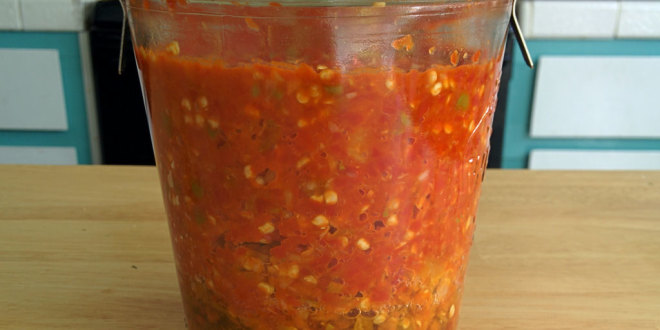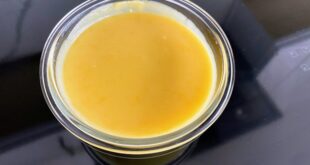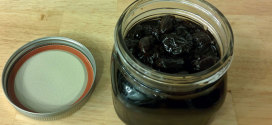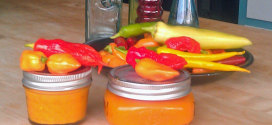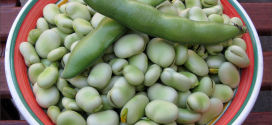Think Tabasco. Think Sriracha. Fermenting your own chile sauce is an alternative to a vinegar boil.
So, what exactly does fermented mean? Fermented means that bacteria, such as Lactobacillus, have gotten into the food and eaten the sugars. The sugars, through the magical process of anaerobic respiration, have been converted into CO2, alcohol, and lactic acid. Lacto fermentation is when the main by-product of the controlled fermentation product is lactic acid.
Made with Habanero Chiles and Pequin Chiles.
How does fermentation work?
How do you know if it is safe to eat?
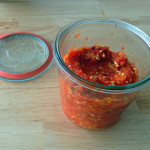 After ninety days of winter fermentation (November through January), this sauce is still safe. The chile has been in glass jar that can release the excess carbon dioxide. This can be a jar with a rubber seal (in this example: a Weck jar) or a standard mason jar with a paper towel instead of the mason lid (you still use the band). The jar was stored in a pantry shelf out of the sun and a stable room temperature of 70 degrees.
After ninety days of winter fermentation (November through January), this sauce is still safe. The chile has been in glass jar that can release the excess carbon dioxide. This can be a jar with a rubber seal (in this example: a Weck jar) or a standard mason jar with a paper towel instead of the mason lid (you still use the band). The jar was stored in a pantry shelf out of the sun and a stable room temperature of 70 degrees.
The black spots are rocoto chile seeds. They went in black and they come out black. No problem.
Why bother?
Recipe for fermenting peppers
PREP: 20 (active time) mins
COOK: 5 to 7 days (fermentation) mins
READY IN: 25 mins
Seasoned with fresh garlic this fermented hot chili sauce is rich with flavor, bright and fiery. Use it in strict moderation to add flavor and heat to your meals. You’ll notice that the flavor of this sauce is more uniquely complex than vinegary sauces you can purchase at the grocery store.
Ingredients
1.5 pounds fresh chili peppers
2 to 3 cloves garlic, peeled
Unrefined sea salt : 2% by weight OR about 2 teaspoons (VERY IMPORTANT)
1/8 cup starter culture (see below)
Instructions
Snip the stems from the chilies, but leave their green tops intact.
The reason for sea salt is that table-salt contains iodine which makes the sauce cloudy. That is not harmful just not as attractive. it is recommended that the salt should be two percent by weight of the peppers. If you add less salt you increase the risk of the sauce breaking bad.
You have your choices for starter culture: whey, the liquid from yogurt, natural kimchee or sauerkraut juice.
Combine all of the ingredients in a food processor. I strongly recommend a mini-cuisinart dedicated to that purpose. The reason is that the hotter peppers stain the plastic and leave a distinct heat for years to come. Your significant other will not like that.
Spoon the chili paste into a glass mason jar and allow it to fermented, covered, in a dark cupboard at room temperature for five to seven days. Make sure your jar has a couple of inches of room after you fill the jar because the volume of the sauce will expand.
Decide if you are making chili-paste-sauce or hot sauce. If you want hot sauce, you strain the mixture. After the chili paste has bubbled and brewed for about a week, set a fine-mesh sieve over a mixing bowl and spoon the fermented chili paste into the sieve. With a wooden spoon, press the chili paste into the sides of the sieve so that the sauce drips from the sieve into the waiting mixing bowl.
Once you’ve pressed and pushed the chili sauce through the sieve, pour the sauce from the bowl into jar or bottle and store in the refrigerator. The sauce will keep for several months.
